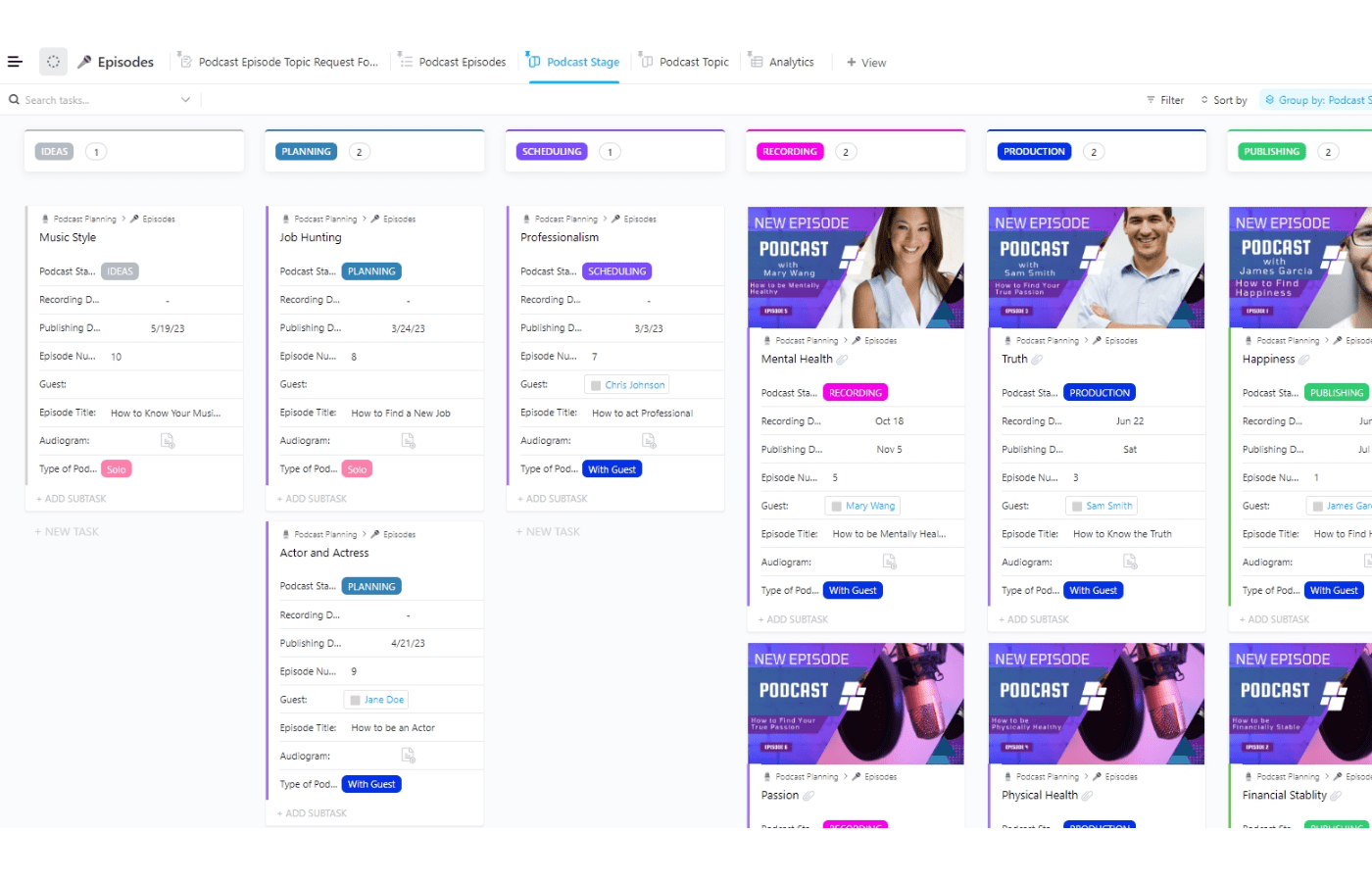KEY TAKEAWAYS
Outlining the details and defining factors is crucial at the start of any project. Without a clearly defined scope of a project, timelines stretch, budgets balloon, and teams fall out of sync. In this comprehensive guide, we’ll break down what a project scope means, why it matters, how to write a scope statement, and how to manage it successfully.
What is the scope of a project?
The Project Management Institute (PMI) defines scope as “the work content and products of a project or component of a project” and can be “fully described by naming all activities performed, the resources consumed, and the end products which result, including quality standards.” It is the foundation that guides project teams, aligns stakeholders, and sets expectations.
Failing to define a clear scope is one of the top reasons projects derail. According to the PMI, scope changes are among the leading causes of project failure. A loosely defined scope invites scope creep — when new, uncontrolled tasks sneak into the project, stretching budgets and timelines beyond recognition.
Case study: The cost of poor scope management
When the team behind the Royal Adelaide Hospital closed the project, they discovered it was 18 months behind schedule and AU$640 million over budget. The total cost ballooned to AU$2.3 billion, making it the most expensive building in Australia.
The primary culprit? Scope changes — including last-minute requests to add features like service robots to deliver linens and digital tracking systems for equipment and patients.
This example highlights a critical truth: a loosely defined project scope can derail even the most well-funded projects. Without clear boundaries, projects are vulnerable to delays, rising costs, and stakeholder confusion.
Lesson learned: A strong, specific project scope statement is your best defense against budget blowouts and schedule slips.
What are the key components of a project scope?
A solid project scope outlines several essential components that define the direction and boundaries of a project. Overall, these key components can be divided into seven categories:
Scope description
This component refers to a description, which can be high-level or detailed, depending on the application, that outlines what the project will include and, just as importantly, what it will not. This serves as a boundary-setting tool that keeps the project team aligned on what work is authorized and helps avoid unnecessary or unrelated tasks from creeping in. It also helps stakeholders quickly understand the project’s purpose without getting lost in the technical details.
Deliverables
The deliverables pertain to the specific products, services, or results the project will produce. These should be measurable and tangible. For example, instead of saying “a new website,” a deliverable might be “a responsive e-commerce website with integrated checkout and mobile optimization.” The more detailed the deliverables, the easier it is to measure success.
Business case
While this is not often highlighted across all project scopes, the business case section explains why the project is being initiated in the first place. It connects the project to larger business goals or problems that need to be solved. For instance, a company might justify a new software implementation to reduce manual data entry and improve efficiency across departments.
Exclusions
Also called out of scope, this component of a project scope specifies what the project will not include. Though often overlooked, exclusions are critical for managing stakeholder expectations. By clearly stating what’s outside the project’s scope, such as marketing campaigns or post-launch maintenance, you reduce the chances of misunderstandings or requests that could derail timelines.
Constraints
Project constraints are the known limitations that the project must work within. These often involve time, budget, or resource limits. Identifying constraints early allows teams to plan realistically and prioritize effectively.
Assumptions
Assumptions are elements considered true for planning purposes, even if they haven’t been fully validated. These might include assumptions like “The client will provide all content before development starts” or “All team members will be available at 100 percent capacity.” Documenting assumptions helps flag potential risks and gives the team something to revisit if challenges arise later.
Scope validity
Scope validity ensures that the defined scope remains accurate, applicable, and reflective of current project goals throughout the project life cycle. It involves ongoing review and validation, especially during key milestones or after significant changes. Teams should periodically reassess the scope to confirm it’s still solving the right problem and aligned with stakeholder expectations.
How to write a project scope: A step-by-step guide
Writing a strong project scope statement involves more than listing tasks, as it also requires careful planning, collaboration, and clarity. Steps to writing a project scope statement may vary with every project, but these are the usual actions involved in the process:
- Identify stakeholders: Start by identifying everyone who has a vested interest in the project; this could include executives, clients, team leads, end-users, or third-party vendors. These stakeholders can influence or be affected by the project’s outcome. This step is important, as you may face resistance or discover new requirements later that could derail the project if you miss key voices early on.
- Define objectives and goals: Objectives are the desired outcomes of the project, while goals are the measurable milestones that help you track progress. These should be specific, realistic, and aligned with the overall business strategy. Objectives give direction; scope defines how you get there.
- Outline deliverables and boundaries: List every product, service, or feature the project will deliver. Be equally clear about what the project won’t do to prevent misunderstandings. A project without clear boundaries is vulnerable to scope creep.
- Note constraints and assumptions: Identify known constraints such as budget limits, fixed deadlines, resource availability, or technological restrictions. Also, document any assumptions you’re making, like client content being delivered on time or tools being available. Constraints shape what’s possible, and assumptions, if wrong, can become risks.
- Review and validate with stakeholders: Before finalizing the scope statement, review it with all key stakeholders. This ensures buy-in and alignment and gives everyone a chance to raise issues or request changes before execution begins.
Free downloadable project scope template
To help you get started, we prepared a project scope template you can download and start using right away.

Download our template for free:
What is the difference between project scope vs. project objectives?
After learning what a project scope is and how to write it, understanding its distinction from project objectives can help clearly define your project scope statement. Though often used interchangeably, project scope and project objectives serve different purposes.
| Aspect | Project scope | Project objectives |
| Definition | What the project will include or exclude | What the project aims to achieve |
| Focus | Boundaries and deliverables | Results and performance goals |
| Example | “Create a mobile app with login, chat, and analytics features.” | “Improve customer retention by 20% within 6 months.” |
Remember: Objectives give direction; scope defines how you get there.
What is the difference between project scope, scope of work, and work breakdown structures?
In project management, understanding the distinction between these documents reduces confusion and streamlines planning:
| Document | Purpose | Relation to scope |
| Project scope | Defines the boundaries and deliverables | The foundation that informs both SoW and WBS |
| Statement of work (SoW) | A formal agreement outlining deliverables, timelines, and terms | May contain scope elements, but more contractual |
| Work breakdown structure (WBS) | Breaks down the scope into smaller tasks for tracking | A visual and task-based breakdown of the scope |
FAQs
Bottom line: The importance of defining project scope in business
A lot of projects suffer from scope creep. The effects of it can be felt throughout the execution, and oftentimes, the project ends up not meeting the goals set at the beginning of the life cycle.
To prevent the project from going off track, effective scope management should be a priority of any project team. A well-defined scope helps ensure deadlines are met, resources are used efficiently, and progress continues smoothly without delays.





